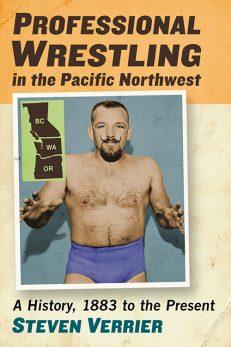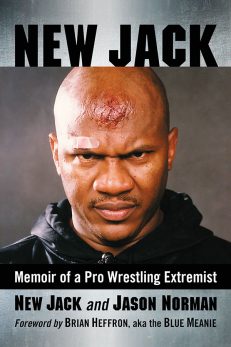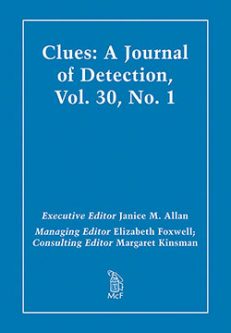Clues: A Journal of Detection, Vol. 30, No. 1 (Spring 2012)
Print Back Issue$30.00
In stock
About the Book
BACK ISSUE
This is a single back issue only. To order a current subscription, or for more information, please visit the journal’s web page at CluesJournal.com. Back issues from earlier volumes of Clues are available for order subject to availability. Also, single issues of the current volume may be ordered one at a time. Individuals may order back issues directly from our online catalog, and the charge for individuals is $30 (excluding postage). Issues from Volume 33 to the present are also available in ebook format on Kindle, Nook and Google Play.
The charge for single issues for institutions is $75 per issue (excluding postage). If your institution requires a back issue, please contact us to order at the appropriate rate.
About the Author(s)
Bibliographic Details
Executive Editor Janice M. Allan
Managing Editor Elizabeth Foxwell
Consulting Editor Margaret Kinsman
Format: softcover (7 x 10), back issue
Pages: 116
Bibliographic Info:
Copyright Date: 2012
ISSN 0742-4248
Imprint: McFarland
Table of Contents
An Introductory Word
JANICE M. ALLAN 5
The new executive editor of Clues introduces herself and new members of the Clues editorial board as well as discusses the content of the issue.
James Hogg’s Confessions of a Justified Sinner and the Romantic Roots of Crime Fiction
MATTHEW MCGUIRE 8
The author attempts to situate James Hogg’s The Private Memoirs and Confessions of a Justified Sinner (1824) as a key text in the proto-history of crime fiction. Hogg’s novel is considered alongside the early crime fiction of William Godwin and Charles Brockden Brown, and the cultural milieu of the 1820s, specifically Blackwood’s “tales of terror” and the work of Thomas De Quincey. Reading Hogg’s novel in this way reasserts the somewhat overlooked origins of crime fiction within the broader contexts of romanticism.
“Away with dark shadders!” Juvenile Detection Versus Juvenile Crime in The Boy Detective; or, The Crimes of London. A Romance of Modern Times
LUCY ANDREW 18
The 1860s saw a proliferation of “penny dreadful” fiction, featuring juvenile criminal protagonists, which was accused of glorifying and encouraging crime amongst its young readers. Working from within this controversial tradition, The Boy Detective (1865–66) utilizes the juvenile detective hero to reconfigure the relationship, both fictional and real, between the child and crime.
“I Used to Be a Highbrow but Look at Me Now”: Phrenology, Detection, and Cultural Hierarchy in S. S. Van Dine
BROOKS E. HEFNER 30
This article reads Willard Huntington Wright’s work against his anxieties about cultural hierarchy and value, utilizing archival work in Wright’s papers at the University of Virginia and unearthing a previously unknown series of crime stories that he published under another pseudonym a decade before his success as bestselling detective novelist S. S. Van Dine. The author argues that Wright’s work in popular fiction provides a special opportunity for interrogating the highbrow/lowbrow divide and its phrenological roots.
(Re)Model(ed) Towns and the Remodeling of American Ideology: The Expansion of Middle-Class Hegemony in Allan Pinkerton’s The Model Town and the Detectives and Dashiell Hammett’s Red Harvest
MARK T. DECKER 42
Critics have seen Dashiell Hammett’s Continental Op as a radical critique of capitalism and a symbol of American individualism. An exploration of Hammett’s middle-class aspirations and a comparison between Red Harvest (1929) and Allan Pinkerton’s The Model Town and the Detectives (1876) suggests that Hammett participated in the ideological reconfiguring of the American middle classes that took place in the late-nineteenth and early-twentieth centuries. Both texts portray towns redeemed by a middle-class, professional detective, but Hammett’s detective is an amoral, trained expert—the twentieth-century ideal—and no longer Pinkerton’s respectable entrepreneur.
Unruly Bodies: The Politics of Sex in Maj Sjöwall and Per Wahlöö’s Martin Beck Series
DAWN KEETLEY 54
Between 1965 and 1975, Swedish writers Maj Sjöwall and Per Wahlöö published ten police procedurals that defined the shape of Scandinavian crime fiction. Although the later novels featuring Inspector Martin Beck and his investigative team clearly indict the social-democratic welfare state in Sweden, the earlier novels depict crimes that critics have dubbed “private,” “personal,” “pathological,” and “almost totally apolitical.” The author questions the consensus that the earlier novels, because they involve sexual crimes, are not political.
Going South: The Hap and Leonard Novels of Joe R. Lansdale
MICHAEL GIVEN 65
The author argues that the Hap Collins and Leonard Pine novels by Joe R. Lansdale exemplify a special category of crime fiction that might be described as “hard-boiled Southern noir.” Through a comparison of passages from Lansdale’s Savage Season (1990) and Mucho Mojo (1994) to James Lee Burke’s Dixie City Jam (1994), the author explores the generic hybridity of this understudied writer.
“I’m Your Girl”: Queering Gender Affiliation in Megan Abbott’s Queenpin
PHYLLIS M. BETZ 76
Characters’ desires in noir fiction affect the development of their relationships and the narrative, usually within an appropriate heterosexual situation. However, in Megan Abbott’s Queenpin (2007), the unnamed female narrator directs her emotional and erotic attraction to Gloria Denton, the queenpin of the title. Throughout the novel, the narrator alters between explicitly acknowledging and articulating this attraction and refusing to accept its implications; instead, she directs her sexual desire to an acceptable male despite the violence of this relationship. The narrator’s ultimate inability to accept her desire for Gloria leads to her diminished position at the novel’s conclusion.
Fictional Death and Scientific Truth: The Truth-Value of Science in Contemporary Forensic Crime Fiction
KERSTIN BERGMAN 88
In this article, the author explores the relationship between science and truth in forensic crime fiction by analysis of narrative and media-specific constituents of CSI: Crime Scene Investigation (2000–) and Patricia Cornwell’s The Scarpetta Factor (2009). Despite the different media, both are found to establish a strong bond between science and truth, and readers/viewers are encouraged to assume that this also is the case in the external world.
Dead Husbands and Deviant Women: Investigating the Detective Widow in Neo-Victorian Crime Fiction
NADINE MULLER 99
Over the past decade, the detective widow has become a well-established character in the little-explored subgenre of neo–Victorian crime fiction. In Tasha Alexander’s Lady Emily series, the author argues, the detective widow investigates the gendered characteristics and complexities of Victorian widowhood while detecting the artistic crimes associated with historical fiction’s imitations and adaptations of the past.
BOOK REVIEWS
Mary Elizabeth Braddon. Henry Dunbar. Ed. Anne-Marie Beller. CHRISTOPHER PITTARD 110
Christopher Pittard. Purity and Contamination in Late Victorian Detective Fiction. JOHN SCAGGS 112
Author Guidelines are on page 115
Book Reviews & Awards
- “Clues is a must-have for readers and writers of crime fiction. Scholarly, thought-provoking, wide-ranging in its topics, Clues covers the crime and thriller map.”—Sara Paretsky
- “A. Conan Doyle, notoriously resentful of Sherlock Holmes’s success, liked to scorn ‘police romances’ as less significant and worthy of his talents than his other literary work. If he could have read Clues, the thinking mystery reader’s journal, he would surely have felt differently—and learned much he never realized himself about even his own landmark contribution to the genre, from which so much else by others has flowed.”—Jon Lellenberg, U.S. agent for the Arthur Conan Doyle estate
- “I love reading Clues. Every issue provides thought-provoking, well-researched articles. The variety and scope of the material found in Clues makes an unparalleled, ongoing contribution to our understanding of the role of crime fiction in our culture, and the genre’s reflection of its time and society.”—Jan Burke, Edgar-winning author of The Messenger (2009)
- “Clues is an important journal. It carries the torch of tradition that is the backbone of detective fiction. It goes below the surface and gets to the heart of what makes the genre so fascinating and valid today”—Michael Connelly, author of the Harry Bosch novels, including The Overlook (2007)
- “for erudite and fascinating truths about mysteries, follow the clues to Clues, the scholarly journal that is an essential resource for every serious student of the mystery”—Carolyn Hart, author of Death Walked In (2008)
- “with scholarship ranging from Poe to Peters, nothing beats Clues”—Joan Hess, author of Mummy Dearest (2008).





